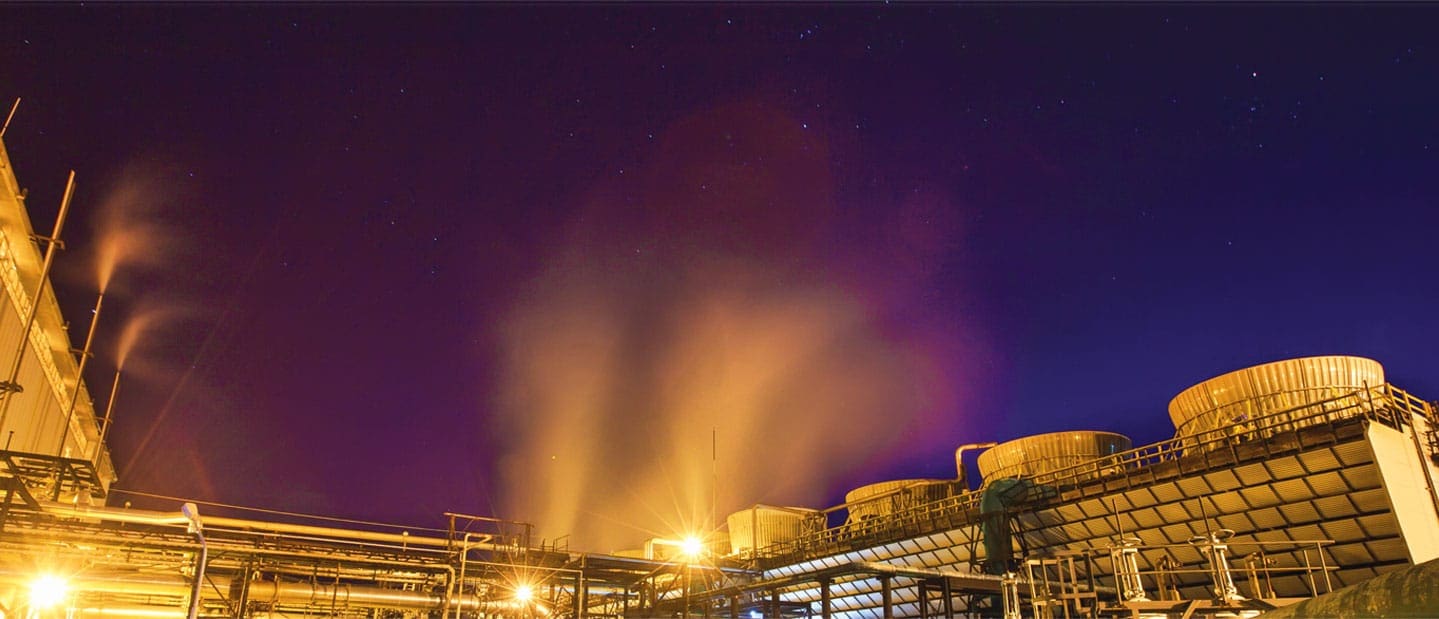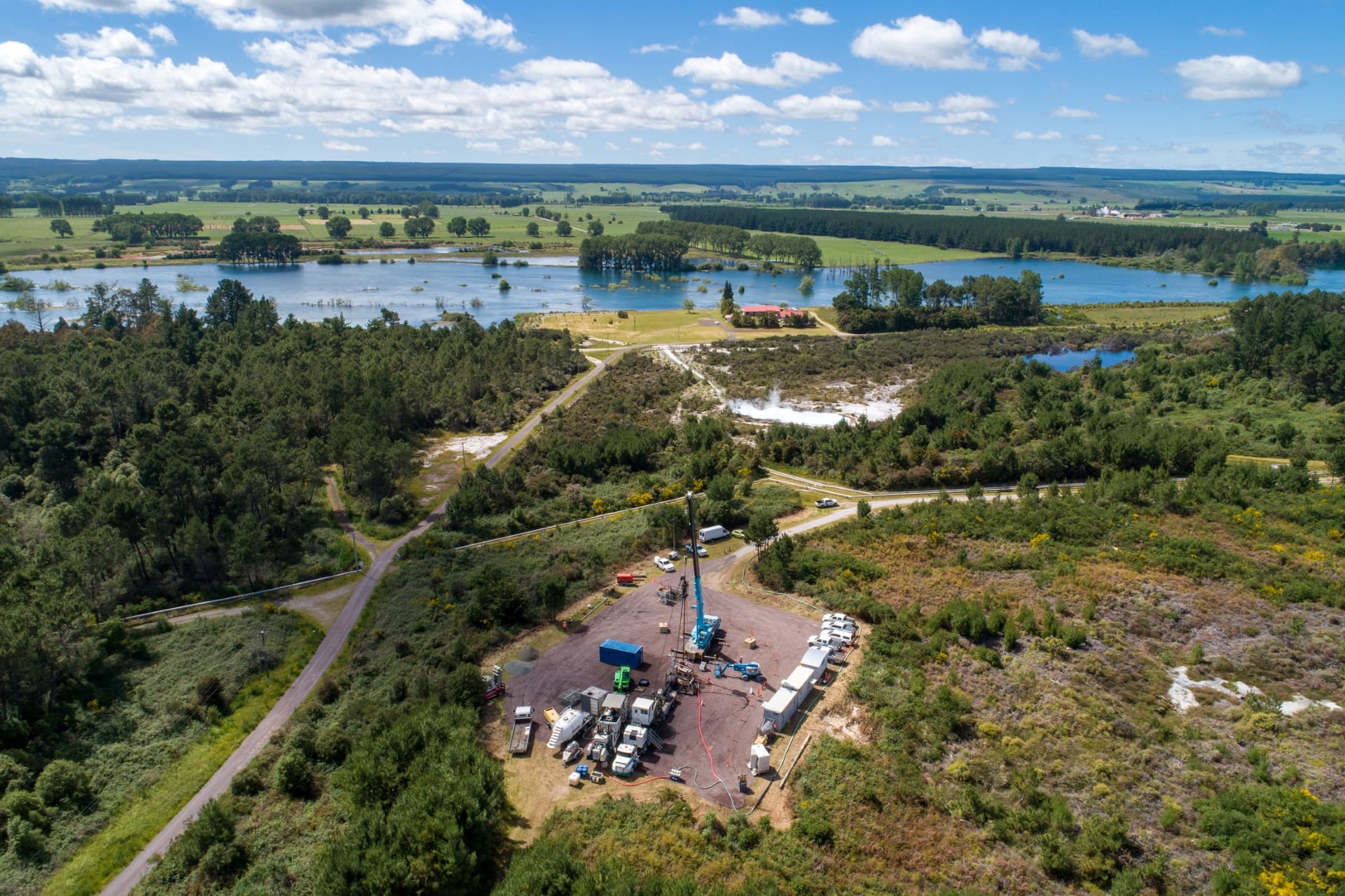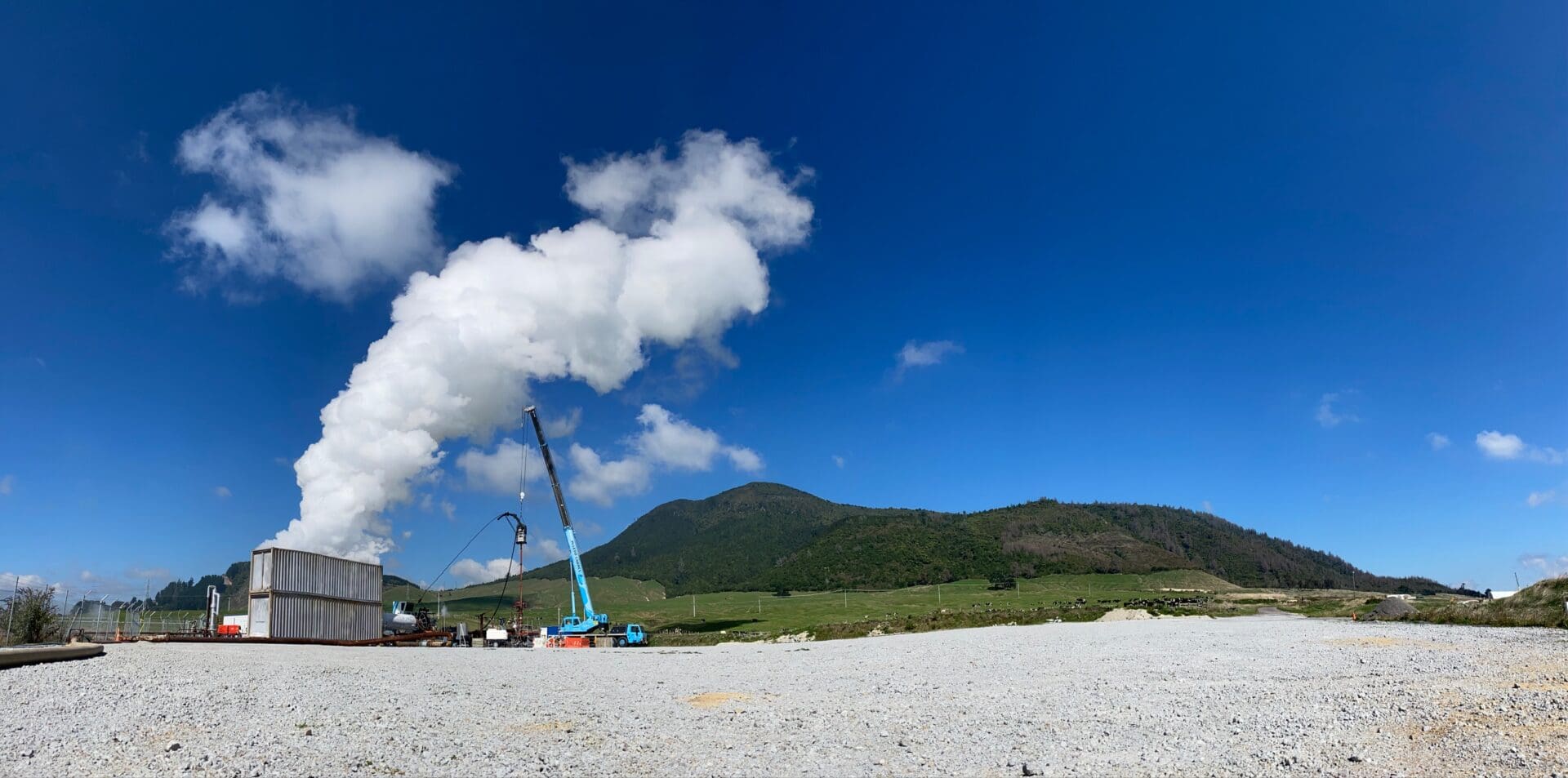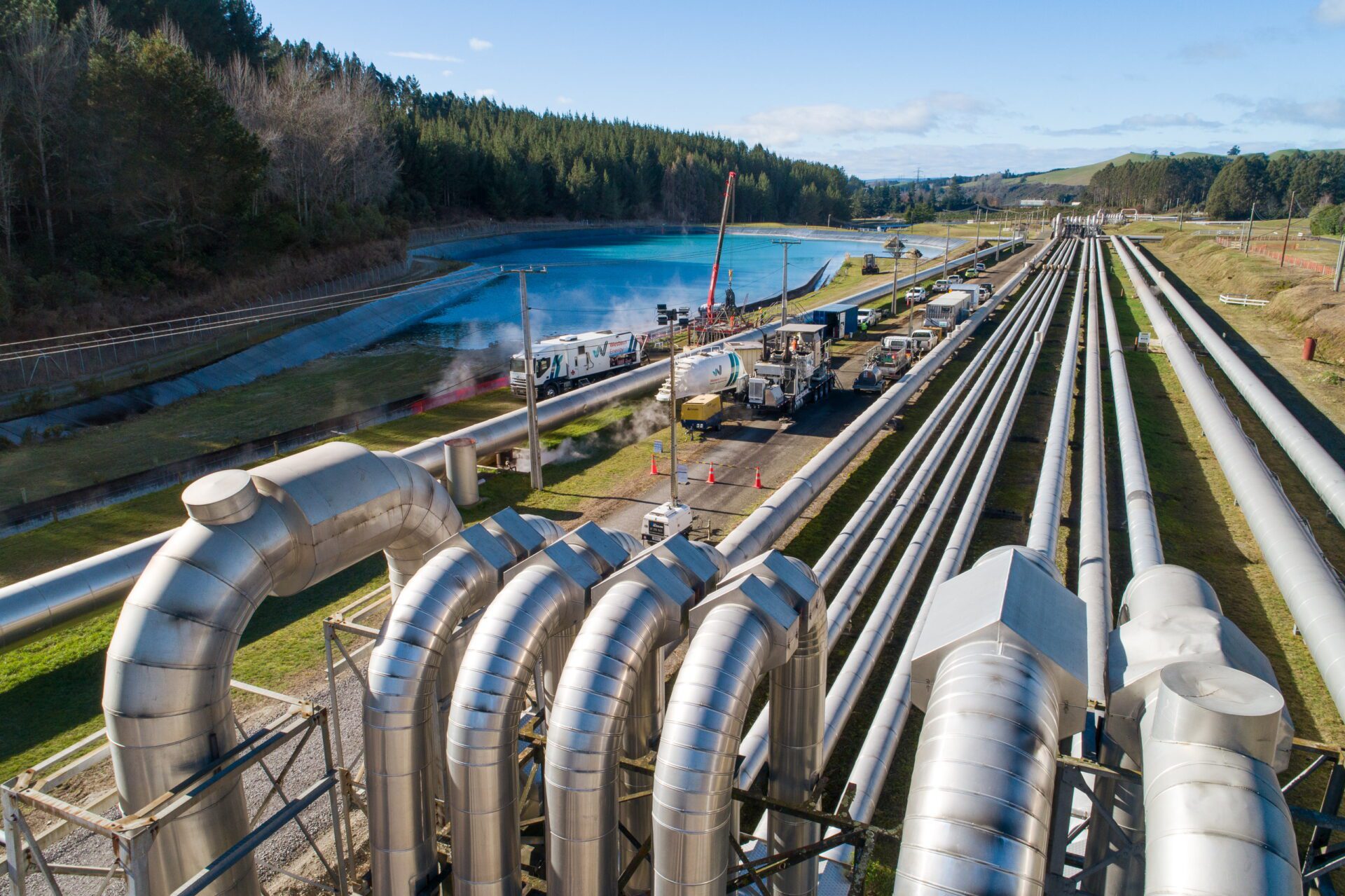
CASE STUDY Acoustic Borehole Imaging In Tauhara Development
Optimising Geothermal Field Management with ABI at Wairakei-Tauhara Geothermal Field
CLIENT Contact Energy
LOCATION Wairakei Geothermal Field, Taupō, New Zealand
Objectives
Assess permeability, fracture characteristics, and rock texture in the Tauhara geothermal development, when cuttings are unavailable, to aid in field management, well planning, and intervention strategies, by using the Acoustic Borehole Imaging (ABI).
Challenges
Assess subsurface permeability and fracture characteristics without available cuttings to inform effective field management and future drilling plans.
Results
Since 2009, 19 formation image logs were conducted during drilling at the Wairakei-Tauhara geothermal field in with the ABI tool. Deployment of ABI provided high-resolution imaging and comprehensive borehole coverage, enabling a better understanding of feed zones for enhancing field management, well planning, and intervention strategies.
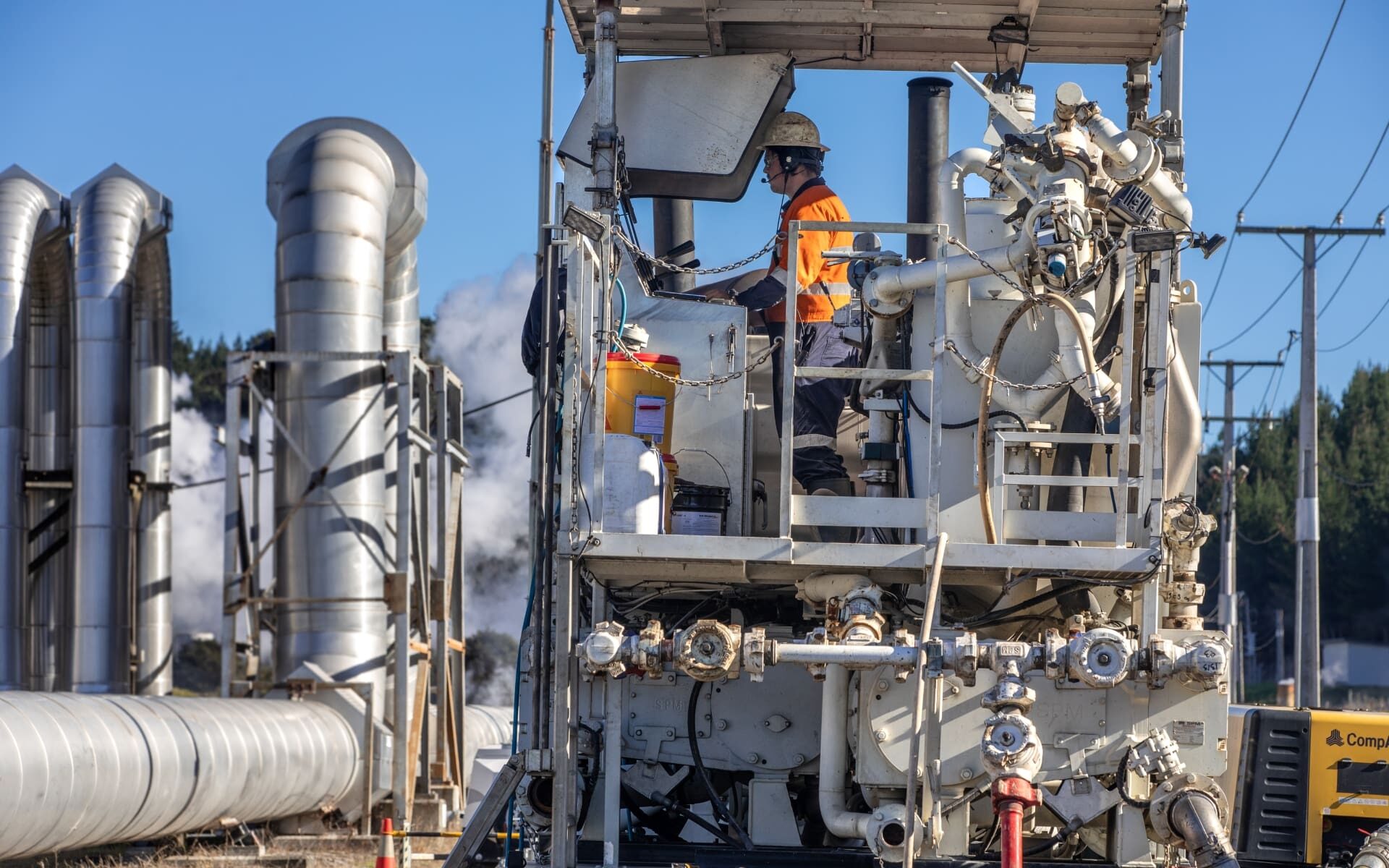
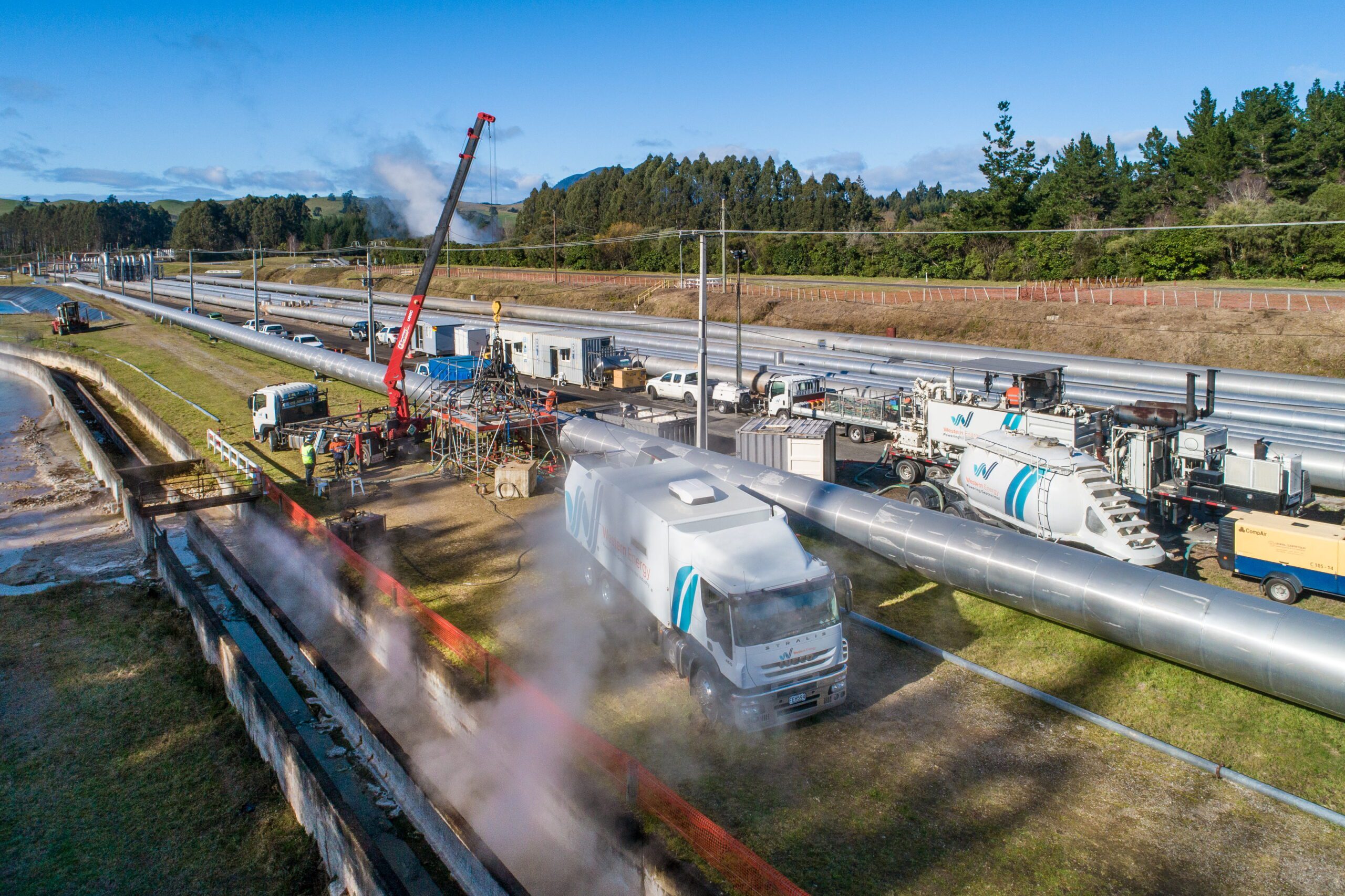
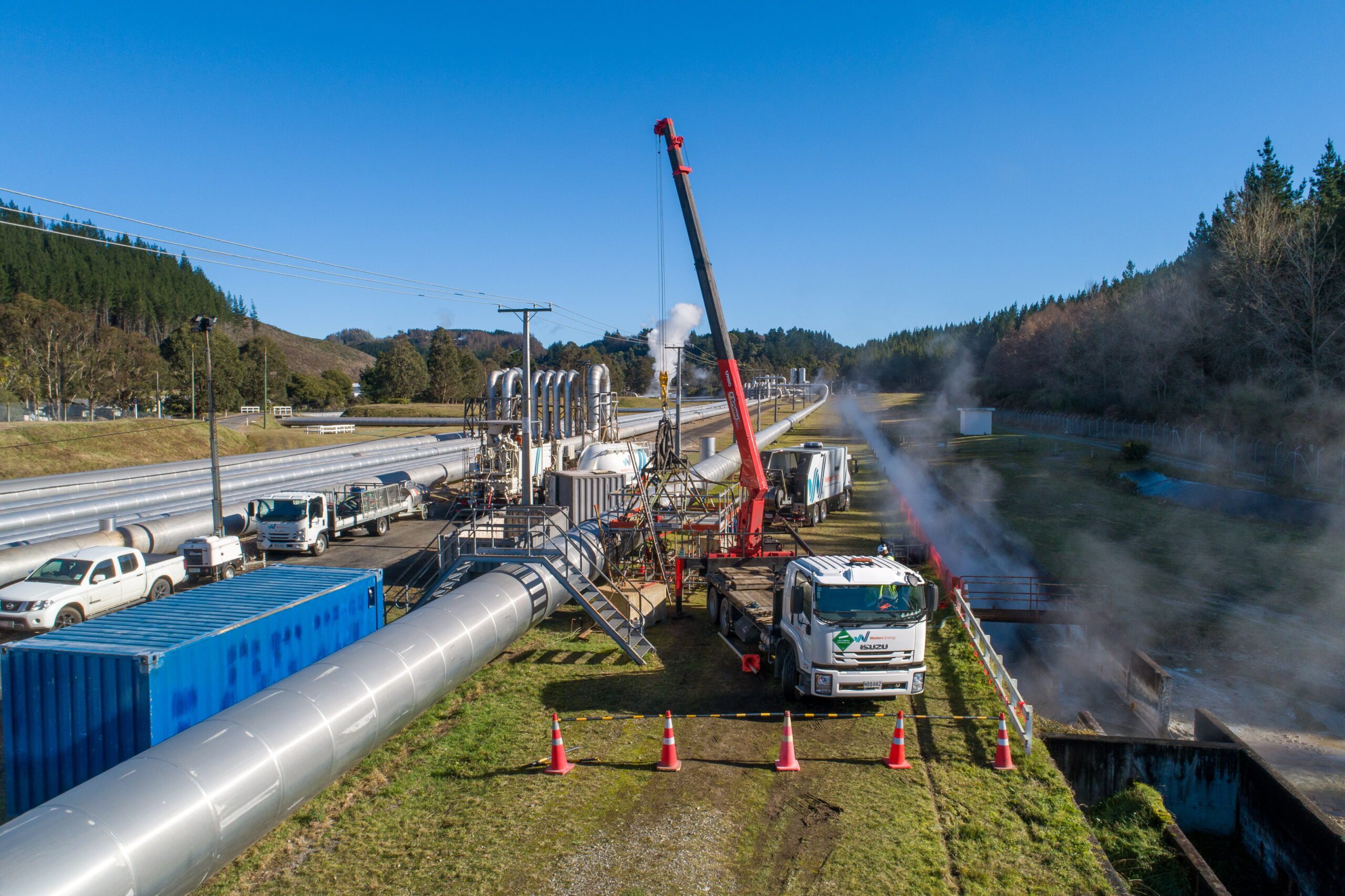
KEY EQUIPMENTAcoustic Borehole Imaging (ABI)
For resource management in challenging drilling conditions. Navigating deviated open holes with ease, its capability to deliver high-resolution imaging and comprehensive borehole coverage provides insight into subsurface conditions. It guides well planning and interventions by providing assessment of feed zones and reinjection cooling risks.
The Project
Understanding subsurface permeability, fracture density, aperture, and rock texture is crucial for geothermal resource management and planning.
However, when cuttings are unavailable, traditional assessment methods are limited. Contact Energy faced the challenge of effectively characterising the subsurface in the Tauhara development to inform field management decisions, assess reinjection cooling risks, and plan future wells and interventions.
To address this challenge, we were contracted to convey Acoustic Borehole Imaging (ABI). Since 2009, 19 formation image logs have been run during drilling at Wairakei-Tauhara. The ABI tool, capable of deployment via mono or multiconductor cable and operation in SRO mode for real-time data, provides high-resolution images and extensive borehole coverage. Its smaller size allows passage through deviated open holes.
ABI data were correlated with pressure-temperature-spinner surveys to understand feed zone characteristics, supporting field management, assessing reinjection cooling risk, planning future wells by targeting permeable fractures, and guiding well interventions such as solution based cleanouts and calcite inhibitor deployments.
By utilising the ABI tool, Contact Energy gained valuable insights into the subsurface characteristics of the Tauhara geothermal development. The high-resolution imaging and extensive borehole coverage provided long-term value for field management. The data facilitated assessment of reinjection cooling risks and informed the planning of future wells by identifying the preferential orientation of permeable fractures, increasing the likelihood of intersecting permeable structures in deviated wells.
Additionally, understanding permeability ahead of well interventions was improved, aiding the effectiveness of solution based cleanouts and calcite inhibitor deployments. Contact Energy preferred the ABI tool due to its superior imaging capabilities and suitability for the challenging conditions of deviated open holes.
Keen to drill deeper?
Download the full case study PDF to see how it all came together.
UNLOCK YOUR GEOTHERMAL POTENTIAL WITH WESTERN ENERGYDiscuss Your Specific Needs With Us
Ready to take your drilling operations to the next level? Let our expert team partner with your organisation to ensure efficient operations, accurate data acquisition, optimised well targeting, and outstanding results.
Fill out the form, and one of the team will contact you soon.

